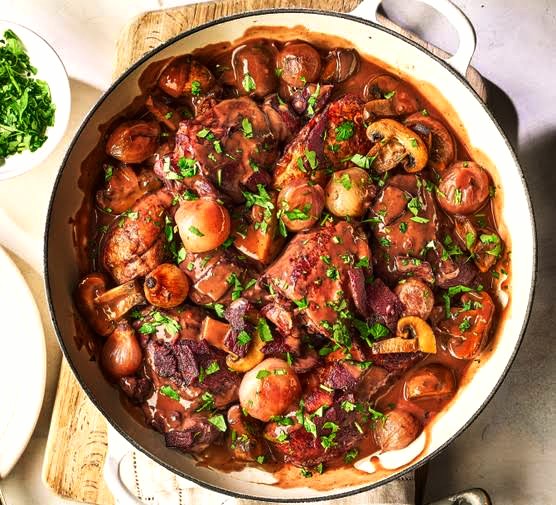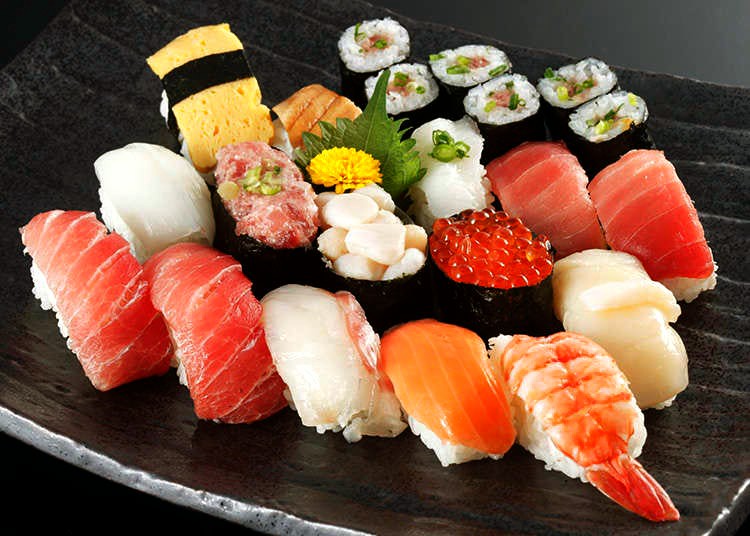
Best Continental Dishes in the World

Food forms an integral part of cultural identity and offers an excellent way to experience the world without leaving home. Continental dishes, characterized by its use of fresh ingredients, innovative cooking techniques, and diverse flavors, provides a plethora of dishes that are both unique and delightful. Below is a comprehensive exploration of some of the best continental dishes from various parts of the world. Each section delves into the origin, ingredients, preparation methods, and cultural significance of these iconic continental dishes.
1. French Cuisine: Coq au Vin

Origin and Cultural Significance
Coq au Vin, which translates to “rooster in wine,” embodies the essence of French cooking—simple, rustic, and rich in flavor. Originating from the Burgundy region, this dish began as peasant food, transforming tough rooster meat into a delectable meal using wine and slow cooking methods.
Ingredients and Preparation
The primary ingredients include chicken (traditionally rooster), red wine (preferably Burgundy), mushrooms, onions, garlic, bacon, and herbs like thyme and bay leaves. Start by marinating the chicken in wine and herbs, then brown it in bacon fat. Sauté the vegetables and mushrooms, and then simmer the chicken slowly in the wine until tender. The result is a flavorful, hearty dish often served with potatoes or crusty bread.
Taste and Presentation
Coq au Vin boasts a deep, rich flavor with tender meat that falls off the bone, complemented by a thick, velvety sauce. The combination of wine, herbs, and bacon creates a complex taste that feels both comforting and sophisticated.
2. Italian Cuisine: Risotto alla Milanese

Origin and Cultural Significance
Risotto alla Milanese, a staple of Milan, Italy, stands renowned for its creamy texture and vibrant color. This dish epitomizes Italian culinary philosophy—using simple, high-quality ingredients to create something extraordinary. Traditionally, risotto served as a poor man’s food, but Risotto alla Milanese has evolved into a symbol of Milanese culinary tradition.
Ingredients and Preparation
Key ingredients include Arborio rice, saffron, butter, onion, white wine, chicken broth, and Parmesan cheese. Start by sautéing onions in butter, toasting the rice, and gradually adding hot broth while stirring continuously. Dissolve saffron in a small amount of broth and add it towards the end to impart its distinctive color and flavor. Finish the dish with butter and Parmesan to achieve a creamy consistency.
Taste and Presentation
This risotto is rich and creamy, with a subtle saffron flavor that adds a unique depth. The dish is typically served as a first course (primo) and garnished with extra Parmesan and a touch of black pepper.
3. Spanish Cuisine: Paella Valenciana

Origin and Cultural Significance
Paella Valenciana, originating from the Valencia region in Spain, reflects Spanish culture and tradition. Historically a farmer’s dish, it has grown into a national symbol of Spain’s culinary heritage. Paella is often enjoyed during family gatherings and festivals, symbolizing community and celebration.
Ingredients and Preparation
Essential ingredients include Bomba rice, saffron, chicken, rabbit, green beans, tomatoes, and a variety of spices such as paprika and rosemary. Use olive oil to sauté meat and vegetables, followed by the rice, which you then simmer in a rich broth infused with saffron and other spices. Traditionally, cook the dish in a large, shallow pan over an open flame.
Taste and Presentation
Paella Valenciana is known for its vibrant yellow color and complex flavors, combining tender meat with the earthiness of vegetables and the aromatic saffron. The rice cooks to a perfect al dente, with a slightly crispy layer at the bottom called “socarrat,” which is highly prized.
4. Greek Cuisine: Moussaka

Origin and Cultural Significance
Moussaka is a quintessential Greek dish with roots that stretch back to the Ottoman Empire. This layered casserole testifies to Greece’s rich culinary history and Mediterranean influences. Moussaka is a popular dish for family dinners and special occasions, embodying Greek hospitality and comfort food.
Ingredients and Preparation
The dish consists of layers of eggplant, ground lamb or beef, potatoes, and a creamy béchamel sauce. Slice and fry the eggplants and potatoes, cook the meat with onions, garlic, tomatoes, and spices like cinnamon and allspice. Assemble the layers in a baking dish, top with béchamel sauce, and bake until golden and bubbly.
Taste and Presentation
Moussaka offers a delightful blend of flavors and textures, from the tender eggplant and savory meat to the rich, creamy béchamel. Serve it in squares, with each layer visible, making for an appealing presentation.
5. German Cuisine: Sauerbraten

Origin and Cultural Significance
Sauerbraten, often referred to as the national dish of Germany, showcases the German knack for hearty, flavorful meals. It is a dish enjoyed during Sunday dinners and festive occasions, steeped in a rich tradition of marinating meat to enhance its flavor and tenderness.
Ingredients and Preparation
The main ingredients include beef, vinegar, water, onions, sugar, and spices such as cloves, bay leaves, and juniper berries. Marinate the beef for several days in a mixture of vinegar, water, and spices, then brown and slow-cook it in the marinade until tender. Thicken the marinade to create a rich, tangy gravy.
Taste and Presentation
Sauerbraten is known for its tender, flavorful meat and distinctive tangy gravy. Traditionally, serve it with red cabbage, potato dumplings, or boiled potatoes, offering a complete, hearty meal.
6. Indian Cuisine: Butter Chicken (Murgh Makhani)

Origin and Cultural Significance
Butter Chicken, or Murgh Makhani, hails from the Punjab region of India and has become a beloved dish worldwide. Its creation is attributed to the Moti Mahal restaurant in Delhi, where leftover tandoori chicken was cooked in a tomato-based sauce with butter and cream. This dish exemplifies the rich, creamy curries for which Indian cuisine is famous.
Ingredients and Preparation
Key ingredients include chicken, butter, tomatoes, cream, garlic, ginger, and a blend of spices such as garam masala, cumin, and coriander. Marinate the chicken in yogurt and spices, then cook it in a tandoor or oven. Prepare the sauce by sautéing tomatoes, garlic, and ginger, then simmering with spices, butter, and cream. Add the cooked chicken to the sauce, allowing the flavors to meld.
Taste and Presentation
Butter Chicken is characterized by its creamy, mildly spiced sauce and tender chicken pieces. Serve it with naan or rice, garnished with fresh cilantro and a drizzle of cream.
7. Japanese Cuisine: Sushi

Origin and Cultural Significance
Sushi, a cornerstone of Japanese cuisine, has a history dating back to the 8th century. Initially a method of preserving fish in fermented rice, it evolved into a refined culinary art form. Sushi is not only a popular dish but also a cultural experience, often enjoyed during special occasions and as a showcase of Japanese craftsmanship.
Ingredients and Preparation
The primary components of sushi are vinegared rice and fresh seafood, though vegetables and other ingredients can also be used. Varieties include nigiri (slices of fish atop rice), maki (rolls), and sashimi (slices of raw fish). Prepare sushi by cooking rice with vinegar, sugar, and salt, then carefully assembling it with other ingredients. The fish must be of the highest quality, often served raw.
Taste and Presentation
Sushi is celebrated for its delicate balance of flavors and textures, from the slightly sweet and tangy rice to the fresh, savory seafood. Serve it with soy sauce, wasabi, and pickled ginger, and present it in an aesthetically pleasing manner that reflects Japanese attention to detail.
8. Mexican Cuisine: Mole Poblano

Origin and Cultural Significance
Mole Poblano, a rich, complex sauce, serves as a hallmark of Mexican cuisine, particularly from the Puebla region. With pre-Columbian origins, it combines indigenous ingredients with Spanish influences, resulting in a unique and revered dish. Mole Poblano often graces celebrations and festive occasions, symbolizing Mexican cultural heritage.
Ingredients and Preparation
The sauce consists of numerous ingredients, including dried chilies, nuts, seeds, spices, chocolate, and fruits. Prepare it by toasting and grinding the ingredients, then simmering them together to create a thick, velvety sauce. Typically, serve it over chicken or turkey.
Taste and Presentation
Mole Poblano is known for its rich, complex flavor profile, balancing sweet, spicy, and savory notes. The sauce appears dark brown and velvety, often garnished with sesame seeds and served with rice.
Conclusion

In conclusion, continental dishes offers a rich tapestry of flavors, techniques, and cultural stories. From the comforting Coq au Vin of France to the intricate Sushi of Japan, each dish stands as a testament to the diverse culinary traditions that shape our global palate. Whether enjoyed in their country of origin or at a local restaurant, these continental dishes provide an opportunity to explore and appreciate the world’s rich culinary heritage.
More Recipes for Continental Dishes
Related Topics
Best African Dishes: Culinary Journey of Special Delicacies
Health: Tips for Healthy Living
Medical Experts Express Concerns Over Milky Doughnuts: Potential Health Risks Highlighted
Embrace a Braces-Friendly Menu: Foods to Enjoy and Foods to Avoid
Mastering Diabetes: Nourishing Low-Carb Recipes for Balanced Living


